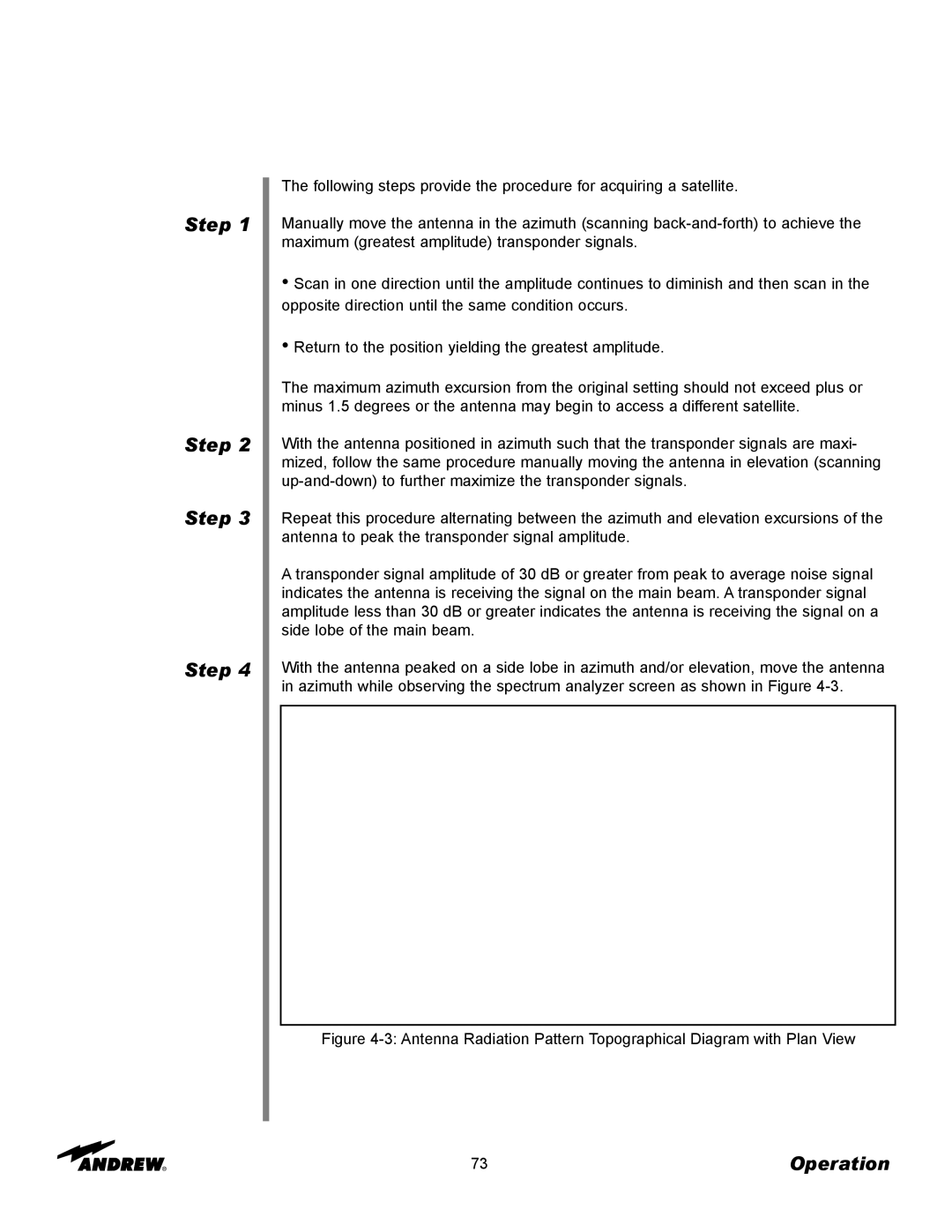
Step 1
Step 2
Step 3
Step 4
The following steps provide the procedure for acquiring a satellite.
Manually move the antenna in the azimuth (scanning
•Scan in one direction until the amplitude continues to diminish and then scan in the opposite direction until the same condition occurs.
•Return to the position yielding the greatest amplitude.
The maximum azimuth excursion from the original setting should not exceed plus or minus 1.5 degrees or the antenna may begin to access a different satellite.
With the antenna positioned in azimuth such that the transponder signals are maxi- mized, follow the same procedure manually moving the antenna in elevation (scanning
Repeat this procedure alternating between the azimuth and elevation excursions of the antenna to peak the transponder signal amplitude.
A transponder signal amplitude of 30 dB or greater from peak to average noise signal indicates the antenna is receiving the signal on the main beam. A transponder signal amplitude less than 30 dB or greater indicates the antenna is receiving the signal on a side lobe of the main beam.
With the antenna peaked on a side lobe in azimuth and/or elevation, move the antenna in azimuth while observing the spectrum analyzer screen as shown in Figure
Figure 4-3: Antenna Radiation Pattern Topographical Diagram with Plan View
73 | Operation |
